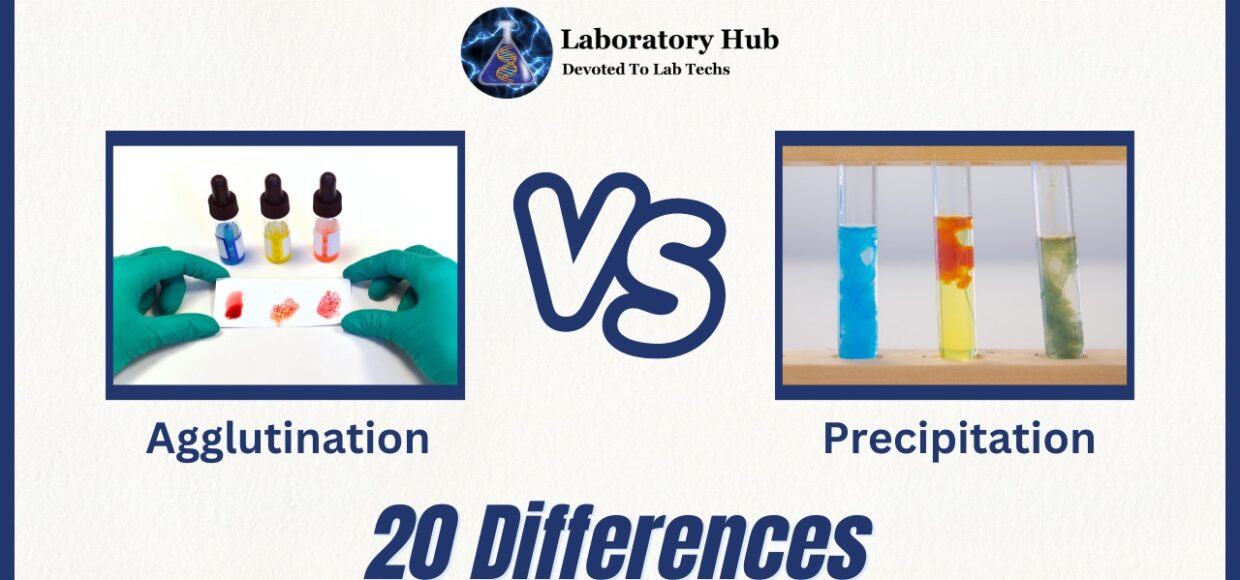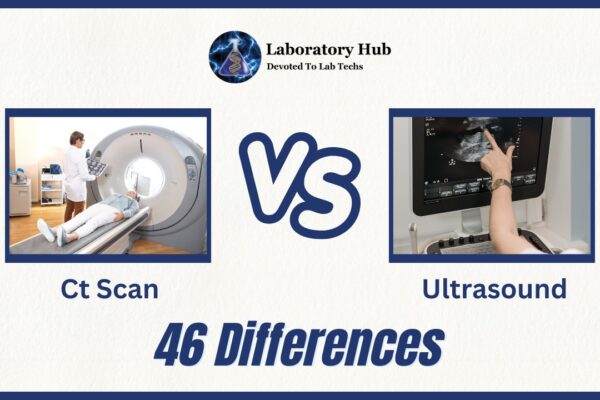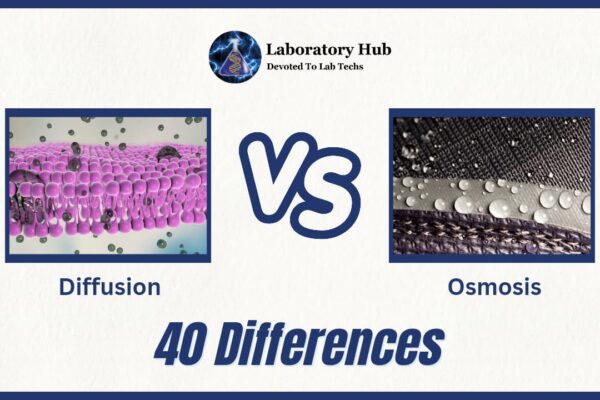Agglutination vs Precipitation- 20 Differences
Introduction
Agglutination and precipitation are essential processes in immunology and laboratory diagnostics for detecting and recognizing antigens and antibodies. Antigens and antibodies interact in both processes, causing observable changes that help diagnose illnesses and monitor immune responses. Agglutination and precipitation have similar concepts but different methods, consequences, and applications.
Antibodies and antigens attach to particles like red blood cells or latex beads to cause agglutination. Agglutinins—antibodies—bind to several antigens on particles’ surfaces, causing them to aggregate. Visually assessing agglutination responses is easy. This method is commonly used for blood typing, serological testing, and infectious illness diagnosis.
When antigens and antibodies mix properly, precipitation forms insoluble immune complexes. Immune complexes precipitate from the solution, generating a visible precipitate. The idea of antibody excess promotes big immune complexes in precipitation processes. Precipitation assays are used to identify antibodies against the causal agent in disorders like syphilis.
Agglutination and Precipitation both employ antigens and antibodies, but their applications and samples differ. Blood typing, transfusion cross-matching, and infectious agent serology use agglutination responses. Agglutination assays are perfect for on-site testing due to their simplicity and interpretability. Precipitation reactions are utilized in labs using specialized equipment and quantitative analytical procedures. Chronic, autoimmune, and allergy diagnoses typically use precipitation tests.
Also read: Why are transitions important in life?
Immunology and diagnostic laboratories use agglutination and precipitation to detect antigens and antibodies. Unlike precipitation, agglutination involves the apparent clumping of particles. Immunology and laboratory diagnostics require knowledge of these mechanisms to accurately diagnose, treat, and monitor diseases.
S.No. | Category | Agglutination | Precipitation |
1 | Definition | Agglutination is the clumping together of particulate antigens, such as cells or insoluble particles, by specific antibodies. | Precipitation is the formation of a visible insoluble complex when soluble antigens and antibodies combine. |
2 | Nature of Antigens | Agglutination involves particulate antigens, such as cells or insoluble particles. | Precipitation involves soluble antigens, such as proteins or polysaccharides. |
3 | Nature of Antibodies | Agglutination is mediated by antibodies, which are typically IgM or IgG antibodies. | Precipitation is mediated by antibodies, which can be of various classes, including IgG, IgM, or IgA antibodies. |
4 | Formation | Agglutination occurs when antibodies cross-link multiple antigens, leading to visible clumping. | Precipitation occurs when antigen-antibody complexes reach a critical concentration and form visible precipitates. |
5 | Size of Complexes | Agglutination forms large visible clumps or aggregates of particles. | Precipitation forms smaller visible precipitates. |
6 | Detection | Agglutination can be detected macroscopically, microscopically, or by agglutination tests, such as the hemagglutination test. | Precipitation can be detected visually as a visible precipitate or by precipitation tests, such as the immunodiffusion or immunoelectrophoresis. |
7 | Particle Movement | Agglutination involves the movement of particles, leading to clumping or agglutination. | Precipitation involves the settling of particles, leading to the formation of a visible precipitate. |
8 | Reaction Format | Agglutination can occur in liquid suspensions or on solid surfaces. | Precipitation typically occurs in liquid solutions. |
9 | Applications | Agglutination tests are used in blood typing, serological diagnosis, and bacterial identification. | Precipitation tests are used in antibody-antigen interaction studies, serological assays, and immunoprecipitation techniques. |
10 | Examples | Examples of agglutination include blood agglutination tests, such as ABO blood typing and the Coombs test. | Examples of precipitation include immunodiffusion assays, such as the Ouchterlony double immunodiffusion. |
11 | Specificity | Agglutination is specific and requires the presence of specific antigens and corresponding antibodies. | Precipitation is specific and requires the presence of specific antigens and corresponding antibodies. |
12 | Solubility | Agglutination involves insoluble or less soluble antigens and antibodies. | Precipitation involves the formation of an insoluble antigen-antibody complex. |
13 | Time Required | Agglutination reactions can occur relatively quickly, typically within minutes. | Precipitation reactions may require a longer incubation time, often hours. |
14 | Visual Appearance | Agglutination results in visible clumping or agglutination of particles, which can be macroscopically observed. | Precipitation results in the formation of a visible precipitate, often seen as a cloudy or turbid appearance in the solution. |
15 | Complex Formation | Agglutination involves the formation of antigen-antibody complexes between particulate antigens and antibodies. | Precipitation involves the formation of antigen-antibody complexes that become insoluble and form precipitates. |
16 | Particle Concentration | Agglutination is influenced by the concentration of particles, antibodies, and antigen-antibody ratios. | Precipitation is influenced by the concentration of antigens, antibodies, and the ratio of antigen to antibody. |
17 | Red Blood Cell Agglutination | Agglutination of red blood cells can be observed in blood typing and blood cross-matching. | Precipitation reactions typically do not involve red blood cell agglutination. |
18 | Mechanism | Agglutination involves the cross-linking of antigens by antibodies, leading to visible clumping. | Precipitation involves the formation of antigen-antibody complexes that become insoluble and form visible precipitates. |
19 | Aggregation Patterns | Agglutination can lead to various aggregation patterns, such as agglutination into clumps, networks, or chains. | Precipitation typically forms homogeneous or heterogeneous precipitates in the solution. |
20 | Prozone and Postzone Effects | Agglutination reactions may exhibit prozone or postzone effects, resulting in false-negative or false-positive reactions. | Precipitation reactions are less prone to prozone or postzone effects compared to agglutination reactions. |
Frequently Asked Questions (FAQS):
Antigen-antibody interactions cause observable changes in agglutination and precipitation. Antibodies attach to antigens to clump particles like red blood cells or latex beads. Precipitation occurs when insoluble immune complexes precipitate out of the solution, forming a visible precipitate.
Diagnostic labs utilize agglutination and precipitation tests. Blood typing, cross-matching, and infectious illness diagnosis use agglutination responses. Precipitation tests can identify syphilis antibodies by forming visible precipitates.
Depending on the test, agglutination and precipitation tests can be done with different sample types. Agglutination tests can use blood, urine, or other body fluids. Precipitation tests use blood-collected serum or plasma samples.
Agglutination tests yield qualitative and semi-quantitative results. Visual agglutination shows a good or negative result. Agglutination may indicate antibody or antigen concentration. Qualitative precipitation tests are based on observable precipitates.
Agglutination and precipitation tests have benefits. They detect and identify antigens and antibodies quickly and cheaply. They seldom need expensive lab equipment. These tests can also be visually interpreted for on-site or point-of-care testing. However, ELISAs may be better for exact measurement.







